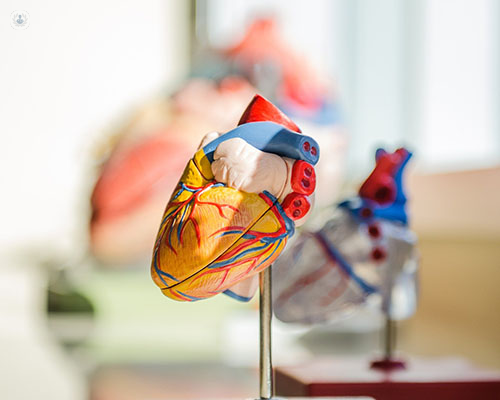How an electrophysiology study works
Autore:The electrophysiology (EP) study can help diagnose a wide range of heart problems and plan the treatment you need. Over recent years, the pool of patients who can safely benefit from an EP test has widened, and with the help of new scanning technology, the EP test involves fewer risks than ever before. We interviewed pioneering cardiologist Prof Sabine Ernst to find out what an EP test looks like in 2020.

What is an electrophysiology (EP) study?
An electrophysiology study is a procedure which is used in the diagnosis of heart rhythm problems (arrhythmias). It is used to localise the abnormal electrical signals in your heart and determine what type of heart rhythm problem you have. The test is mostly conducted under local anaesthetic because most people experience an arrhythmia while awake rather than when sleeping.
There are different ways to carry out an EP study. The most invasive version involves making tiny incisions in the groin area then passing in a set of catheters. These are small, flexible tubes which can move through the blood vessels in your body. The catheters are fed up to the heart and placed in strategic locations. Tiny sensors on the catheters detect electrical signals, and these are read out by a computer.
The less invasive version is often called a “non-invasive mapping study”. This involves having an electrocardiogram (ECG) fitted to your chest and waiting for the patient to have an arrhythmia spontaneously. An ECG can monitor a patient for up to 24 hours. The ECG is combined with an MRI or CT scan to provide a detailed 3D picture of the heart. The less invasive form of the EP study is set to become increasingly common as scanning and computing technology improve.
When is an electrophysiology study needed?
An EP study is used when a heart rhythm problem is suspected but we need to understand in more detail where the abnormal electrical signals are travelling. It is therefore a key part of the diagnosis process and helps us plan the appropriate treatment.
However, these days there are very few situations where we would carry out an invasive EP study on its own . This is because:
- With the vast majority of people we can induce their arrhythmia while they wear a 12-lead ECG, telling us where the problem is coming from. We can do this by putting them on a treadmill, giving them coffee, or giving them drugs to make the heart go faster. We can even induce arrhythmias through a pacemaker if the patient has one fitted.
- Even if an arrhythmia cannot be induced, we will look at how serious the arrhythmia is. If it happens very infrequently, does not cause significant discomfort, is not associated with serious events such as blackouts, and if the risk of stroke is low – then we may ask whether treatment is even necessary.
- When we do carry out an EP test we will almost always pair it with cardiac ablation in the same procedure . The extra risk of inserting the ablation catheter itself is very low, and combining diagnosis and treatment is less risky – not to mention costly – than doing diagnosis and ablation in two separate sittings.
How risky is an electrophysiology study?
The less invasive form of the test is extremely safe.
The main risks of the invasive version of the procedure come from inserting the catheters through your groin, which can cause bleeding or infection. Other risks include:
- damage to the blood vessels between the entry site and the heart
- blood clot in your legs or lungs, or elsewhere in the body
- risks associated with the use of sedation or anaesthetic
On the whole, however, the EP test has become much safer over the last 20 years – and as a result, more patients than ever are suitable for the procedure.
What improvements can we expect to see in the future?
As already mentioned, we can expect scanning and computing technology to continue to improve, allowing us to combine ECG readings and scans more effectively and diagnose heart rhythm problems without an invasive procedure.
We’re also looking at how to produce simultaneous mapping information. At the moment, when we send a catheter into the heart we are taking readings in different places sequentially, so a reading in one part of the heart will come a few minutes after a reading in another part. You get a much clearer picture of how signals are travelling when you can zoom out and see electrical activity all over the heart at the same time. New technology such as “basket mapping” may help us to do this.
Prof Ernst specialises in complex arrhythmias such as atrial fibrillation and ventricular arrhythmia in both paediatric and adult patients. To book a consultation, click here.


